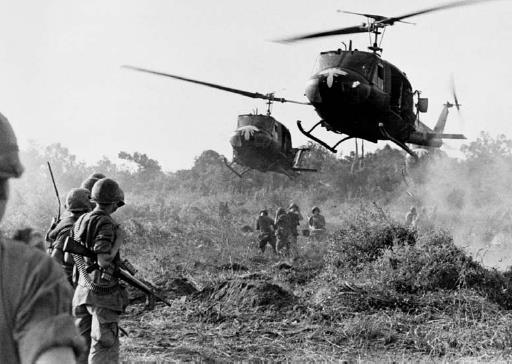War and ConflictVietnam War |
What caused the Vietnam War? |
In the simplest terms, the long conflict in Southeast Asia was fought over the unification of Communist North Vietnam and non-Communist South Vietnam. The two countries had been set up in 1954. Prior to that, all of Vietnam was part of the French colony of Indochina. But in 1946, the Vietnamese fought the French for control of their own country. The United States provided financial support to France, but the French were ultimately defeated in 1954. Once France had withdrawn its troops, an international conference was convened in Geneva to decide what should be done with Vietnam. The country was divided into two partitions, along the 17th parallel. This division of land was not intended to be permanent, but the elections that were supposed to reunite the partitions were never held. Vietnamese president Ho Chi Minh (1892–1969) took power in the north while Emperor Bao Dai (1913–1997), for a while, ruled the south.
But the Communist government in the north opposed the non-Communist government of South Vietnam and believed the country should still be united. The North Vietnamese supported antigovernment groups in the south and over time, stepped up aid to those groups. These Communist-trained South Vietnamese were known as the Viet Cong. Between 1957 and 1965, the Viet Cong struggled against the South Vietnamese government. But in the mid-1960s, North Vietnam initiated a large-scale troop infiltration into South Vietnam, and the fighting became a full-fledged war.
China and the Soviet Union provided the North Vietnamese with military equipment, but not manpower. The United States provided both equipment and troops to non-Communist South Vietnam in its struggle against the Viet Cong and North Vietnam. By 1969 there were more than half a million American troops in South Vietnam. This policy was controversial back in America, where protests to involvement in the Vietnam War continued until the last U.S. troops were brought home in 1973. In January of that year, the two sides had agreed to a cease-fire, but the fighting broke out again after the American ground troops left. On April 30, 1975, South Vietnam surrendered to North Vietnam and the war, which had lasted nearly two decades, ended. North Vietnam unified the countries as the Socialist Republic of Vietnam.
For its part, the North Vietnamese called the conflict a “war of national liberation”: They viewed the long struggle as an extension of the earlier struggle with France. They also perceived the war to be another attempt by a foreign power (this time the United States) to rule Vietnam.

